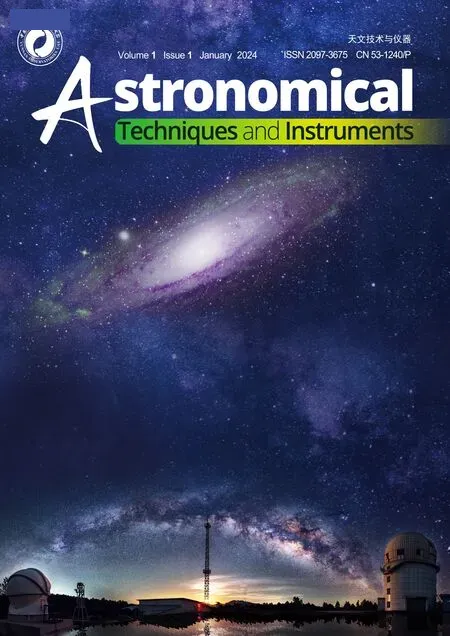Application and prospect of the fluid cooling system of solar arrays for probing the Sun
Kangli Bao, Xiaofei Zhu, Jianchao Feng, Liu Liu, Xiaofeng Zhang*, Zhiming Cai,Jun Lin, Yonghe Zhang
1Innovation Academy for Microsatellites of Chinese Academy of Sciences, Shanghai 201304, China
2Yunnan Observatories, Chinese Academy of Sciences, Kunming 650216, China
Abstract: The Solar Close Observations and Proximity Experiments (SCOPE) mission, which has been proposed by the Yunnan Observatories, Chinese Academy of Sciences, aiming to operate at a distance of 5 to 10 solar radii from the Sun, plans to complete the in situ detection of the solar eruption process and observation of the magnetic field structure response.The solar flux received by the satellite ranges from 103 to 106 Wm-2, which poses challenges for thermal management of the solar arrays.In this work, the solar array cooling system of the Parker Solar Probe is discussed, the developments of the fluid loop technique are reviewed, and a research plan for a next-generation solar array cooling system is proposed.This paper provides a valuable reference for novel thermal control systems in spacecraft for solar observation.
Keywords: In situ detection of solar eruption; Solar array cooling system; Pumped fluid loop; High heat flux dissipation
1.INTRODUCTION
Solar activity has a huge impact on Earth's space environment and on human life, in ways such as interference with orbiting satellites and on-board electronic equipment.Detection of solar activity is conducive to understanding and minimizing potential interference with satellites, thus ensuring they operate successfully in orbit.Solar activity also interferes with the Earth's magnetic field, leading to the phenomenon of "magnetic storms," which affect terrestrial electronic communications and information service equipment.
From ancient times until now, mankind has never stopped exploring the Sun.Thanks to the gradual development of the means of scientific exploration, humanity has created and used solar telescopes, magnetometers, coronal observers, X-ray imagers and other detectors to photograph coronal loops, solar flares, etc[1].In recent years,national and international space institutions have launched spacecraft for solar exploration, including the Solar Dynamics Observatory (SDO), launched in 2010; the Parker Solar Probe (PSP), launched in 2018; the Solar Orbiter,launched in 2020; the Chinese Hα Solar Explorer(CHASE), launched in 2021; the Advanced Space-based Solar Observatory (ASO-S), launched in 2022.However,many scientific questions are still waiting to be explored,such as the exact reason why the coronal temperature is much higher than that of the photosphere, the origin of the solar wind, the source of energetic particles, and the mechanism of acceleration and transport[2].
Although mankind's desire to explore the Sun has persisted for thousands of years, excessive solar radiation is undoubtedly a great challenge to spacecraft design in the course of close-up scientific exploration of the Sun.Dealing with extremely high external heat flow, spacecraft thermal protection, and solar array thermal management are key technologies in guaranteeing the successful completion of scientific exploration by solar probes.The surface of the spacecraft facing the Sun approaches 1 400 °C at a solar distance of 0.046 AU[3].NASA’s PSP uses a carbon-carbon composite sandwich structure for efficient thermal protection.Moreover, it employs a pumped singlephase water loop system to dissipate heat from the solar arrays and to protect the internal payloads and equipments from high temperatures.
The Chinese Solar Eruption Approach Probe, first proposed by the Yunnan Observatories, Chinese Academy of Sciences, aims to orbit the Sun for an extended period of time within an orbital distance 5 to 10 times that of the radius of the Sun.The probe intends to complete the close-up detection of the solar eruption process and observe the response of the magnetic field structure[4,5].The perihelion altitude of its designed orbit is smaller than that of the PSP, which correspondingly places higher demands on spacecraft thermal protection and thermal control technology[4,6].In response to the demand for high heat dissipation in the solar exploration program,this paper discusses the solar array cooling technology developed by NASA in the PSP, reviews the current development and application status of the pumped fluid loop technique, and proposes a research plan for a next-generation solar array cooling system.
2.PSP THERMAL CONTROL TECHNOLOGY
The PSP's orbit at perihelion is approximately 0.046 AU, where the solar intensity is about 7×105Wm-2.The Sun-facing side of the spacecraft surface will be subjected to high temperatures of approximately 1 400 °C.To ensure proper functioning of the instrumentation inside the PSP, the interior of the satellite is required to be maintained at a temperature close to room temperature (approximately 30°C).The Thermal Protect System (TPS) developed by the Johns Hopkins University Applied Physics Laboratory uses a sandwich structure with a carbon-carbon composite surface material with an interior of nearly 4.5 inches of carbon foam with 97% porosity for highly efficient thermal insulation[7,8].The structure of the TPS has a diameter of 2.4 m, with a weight of about 73 kg.Fig.1 shows the structural distribution of the PSP thermal control system.The TPS is located on top of the spacecraft, and the Truss Structure Assembly (TSA) is mounted behind the TPS to connect it to the satellite platform[9].

Fig.1.The thermal control system of the PSP[9].
In addition to the Sun-facing thermal protection materials, the solar arrays, as one of the key components of the PSP, is subjected to extremely high external heat flow variations.As the solar distance decreases from 1.02 to 0.046 AU, the solar intensity on the solar arrays varies from the order of 103Wm-2to the order of 105Wm-2,and this undoubtedly poses a great challenge to the normal operation of the solar arrays.To alleviate the extremely high external heat flow at perihelion, the PSP incorporates a solar array cooling system.
The cooling system uses a fluid loop to dissipate heat absorbed from the solar arrays into the Cooling System Primary Radiator (CSPR), which ensures that the solar arrays remain at the proper operating temperatures to supply power under the intense solar heat flow.The solar array cooling system, shown in Fig.2, consists of 1 reservoir, 1 dual pump set, 2 pump motor controllers, 2 cooling plates, 4 CSPRs, and 3 isolation valves (ISOs).The system operating temperature is required to be within 10-125°C.For the necessary operating temperature range and heat transfer capacity, the system working medium is deionized water with a filling volume of approximately 3.7 L.The system is pressurized to increase the boiling point of the deionized water to over 125 °C to prevent pump cavitation.The system uses single-phase centrifugal pumps, supplied by Hanson, USA, to provide a pressure head of 48-62 kPa, and a total flow rate of 4-6 L/min[3].Maximum power consumption of the solar array cooling system is approximately 49 W with a total weight of 86 kg.

Fig.2.Schematic illustration of the solar array cooling system.(A) Block diagram.(B) Top deck pipes and temperature sensor locations[10].
During the launch and gradual change in orbit of the PSP, ensuring the working mass in the system operates within a safe temperature (between the triple point and boiling point of water) is a critical issue that must be considered in the system design.According to the mission requirements, prior to launch, the PSP uses ground equipment to carry out closed-loop temperature control of 45-50 °C for the deionized water in the reservoir.During the launch process, this liquid is isolated from the rest of the system by ISO1, and the deionized water is kept within a safe temperature range through proper insulation and its own stored thermal capacity.
Incorporating the solar array thermal control requirements, in-orbit major events, orbit location, and orientations of the PSP solar array cooling system are shown in Fig.3.Major events include: (1) After spacecraft attitude adjustments cause the temperature of the solar arrays,CSPR1 and CSPR4, to increase to a safe temperature range and open the isolation valve ISO1 to start the fluid loop; (2) When the orbit correction action is executed, all four CSPRs are in shadow, and to avoid the temperature of CSPR2 and CSPR3 dropping below -150 °C, the duration time for orbital correction actions is limited to 3 hours; (3) At a solar distance of 0.94 AU, after the PSP attitude adjustment, CSPR2 and CSPR3 are warmed up to higher than 20°C by solar radiation, opening the isolation valves ISO2 and ISO3 to start the full loop of the working fluid; (4) When the solar distance is greater than 0.82 AU, the external heat flow of the solar array is low,so it is necessary to adjust CSPR2 and CSPR3 to face to the Sun to ensure that a suitable operating temperature range is maintained; (5) Upon arrival in Venus orbit, the TPS is oriented to the Sun and the solar array cooling system remains in normal operation; (6) When the PSP experiences Venus eclipses and a corresponding absence of solar radiation, CSPR2 and CSPR3 will be oriented toward the Sun before the Venus eclipse so as to store thermal energy in advance to avoid large temperature drop;(7) During a Venus eclipse, the cooling system needs to be above the minimum safe temperature level for at least 11 minutes; (8) When approaching the Sun (<0.7 AU),the solar arrays are folded, and the detector relies on only the solar cells at the tip of each array to receive light and supply power, to reduce the heat input[10].
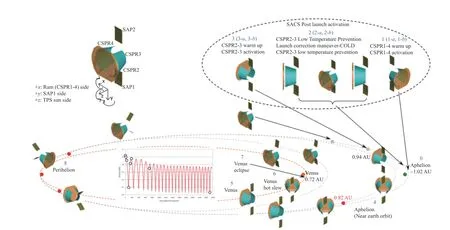
Fig.3.PSP solar array cooling system in-orbit major events, orbit location and orientations[10].
The PSP arrived at the first perihelion in November 2018.The variation of the inlet and outlet temperatures of the solar array cooling plate with solar distance are given in Fig.4, which shows that the temperature difference between the inlet and outlet is approximately 5 °C, and the outlet temperature is lower than 70 °C, which meets the thermal design requirements of the solar arrays[10].

Fig.4.PSP solar array cooling system temperature history during first perihelion[10].
3.SPACECRAFT FLUID LOOP TECHNOLOGY
The Solar Close Observations and Proximity Experiments (SCOPE) spacecraft will reach a much closer solar distance than the PSP, facing higher external heat flux(about 2.5×106Wm-2), which poses a greater challenge to the heat dissipation capability of the solar array cooling system.Pumped fluid loop technology and vapor compression heat pump technology may be suitable for high heat flux cooling, which are discussed below.
3.1.Pumped Fluid Loop Systems
At present, pumped fluid loop technology has been gradually developed and has some on-orbit applications,providing important technical methods for (1) heat dissipation of spacecraft close to the Sun with a heat flux on the order of MWm-2; (2) temperature control for Transmitter and Receiver (T/R) modules of space-borne phased array radar and laser payloads[11]; (3) high-power thermal control of large crewed spacecraft on the level of tens of kilowatts[12]; (4) precise temperature control of payload instrumentation[13], and so on.Pumped fluid loop systems can be classified into pumped single-phase fluid loop and pumped two-phase fluid loop, depending on whether a phase change occurs in the fluid.
3.1.1.Pumped single-phase fluid loop system
As shown in Fig.5, the thermal control system of Chang'e-5 consists of a pump module, a flow resistance adjustment valve, a fluid loop separation module, a working fluid discharge valve and radiator, a water sublimation heat exchanger module, and pipelines.The thermal control system is used for the integrated heat collection and heat dissipation for the lander and the ascender, and the system ensures the flow path separation and reconfiguration before the ascender takes off from the lunar surface through the flow path separation module[14-16].

Fig.5.The schematic of the mechanically pumped fluid loop in the Chang’e-5 spacecraft[19].
A two-stage fluid loop is adopted for temperature control in the Destiny module of the International Space Station (ISS), as shown in Fig.6.Based on the different working temperature inside and outside the cabin, water is used as the working medium for the interior, and heat is exchanged with an ammonia loop outside the cabin through an intermediate heat exchanger, facilitating collection of heat inside and dissipation of heat outside[17,18].The core module of China’s space station (Tiangong)adopts a three-stage circuit for temperature control, including a ventilation circuit system, an internal fluid loop system, and a radiated outer loop system, which enables the collection, transfer, and dissipation of heat from personnel and instruments within the space station[19,20].
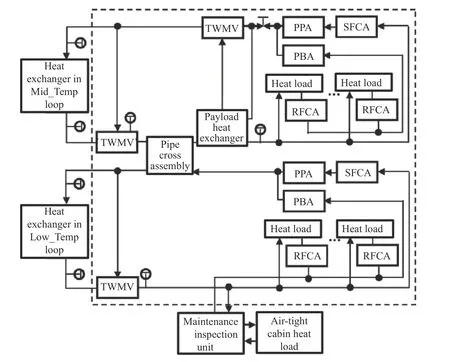
Fig.6.The schematic of the active thermal control system in the International Space Station[17].
A fluid loop cooling technique based on micropumps is used in the Pujiang-1 satellite, launched in 2015.The system, as shown in Fig.7, includes micropumps and their controllers, a fluid reservoir, check valves, and three-way valves and pipes.The micropump of this system is a centrifugal pump driven by a DC brushless motor with a rated flow rate of 1.3 L/min, a rated head of 7.7 m, and a rated power of 10.3 W[21].According to the continuous on-orbit test results of the two micropumps running for 90 days and 9 days, the Shanghai Institute of Satellite Engineering considers the system to meet the requirements for long-term use in orbit.

Fig.7.The micro-mechanical pumped fluid loop of the Pujiang-1 satellite[21].
In conclusion, in recent years, pumped single-phase fluid loop technology has been applied in spacecraft both at national and international levels, with good on-orbit performance, high efficiency heat dissipation, and long-term stable operation, which can cope with the high-power-density heat dissipation demand of next-generation spacecraft.
3.1.2.Pumped two-phase fluid loop systems
Currently, the pumped two-phase fluid loop technique is less commonly used in spacecrafts.Its main difficulties include: (1) Compared with that of single-phase flow, the flow and heat transfer stability of a two-phase loop system is somewhat inferior, resulting in a significant increase in system complexity; (2) The two-phase system operates under high pressure is not as safe and reliable as a single-phase fluid loop; (3) Due to the influence of microgravity on bubble dynamics, the heat transfer characteristics at boiling point change in orbit.[22]; (4)The vapor quality at the pump inlet needs to be strictly controlled in a two-phase system to avoid lifetime degradation of the pump due to cavitation[23].The Alpha Magnetic Spectrometer (AMS02) on the ISS adopts a pumped two-phase CO2loop to precisely control the temperature of tracker instrument in the detector, as shown in Fig.8,and the stability of temperature control has been verified to be ± 0.2 °C in orbit[13,24-27].The gear pump (GAHT23.PVS, flow rate of 8.5-506 ml/min, maximum head of 5.2 bar) manufactured by MICROPUMP, USA, is used for the pumping unit[26].The instrument was launched in 2011, and its cooling system is reported to require periodic in-orbit maintenance, including cooling pump replacement, system leak detection, and fluid charge[28].
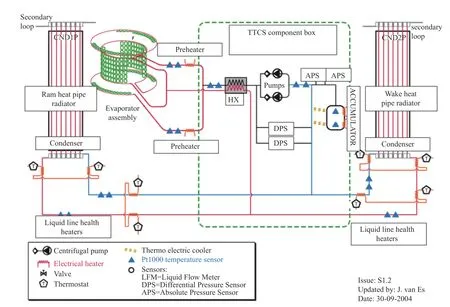
Fig.8.The mechanically pumped two-phase loop of AMS02[25].
The pumped two-phase fluid loop is still in an experimental stage for Chinese spacecrafts.The Beijing Institute of Spacecraft System Engineering designed a pumped two-phase fluid loop system, with R134a (1,1,1,2-Tetrafluoroethane) as a working fluid, and a flow rate of 514 L/h,for 3 × 3 m surface source blackbody temperature control.Test results show that system temperature uniformity can be achieved to ± 0.8 °C, with a stability of ±0.2 °C/15 min, at room temperature above 30 °C, which helps to improve the accuracy of satellite infrared and hyperspectral payload radiation calibration[29].In addition,the pumped ammonia two-phase loop system built by the Beijing Institute of Spacecraft System Engineering was given a three-hour flight test in orbit, involving a microchannel evaporator, a two-phase pump, a high heat source simulator, and a system controller component.Test results showed that the flow boiling heat transfer coefficient of the evaporator reached 7.8-9.1 W/(cm2×°C) with a flow rate range of 0.18-0.65 L/min, and its maximum heat dissipation capacity can reach 271 W/cm2[30].
A ground-based test of a mechanical pumped twophase fluid loop for a space-based remote sensing camera,built by the Beijing Institute of Space Mechanics & Electricity, uses a shielded pump as the driving source.The system has a two-phase, temperature-controlled reservoir with passive cooling as the temperature-control component, and nine heat sources to simulate distributed instruments on a spacecraft.The feasibility and stability of the two-phase fluid loop system was verified based on data monitoring results during the experiments, including startup of the preheater, start-up and shut-down of the heat source, normal operation of the heat source, and power change conditions[31,32].
3.2.Vapor Compression Heat Pump Systems
For thermal management of large spacecraft platforms, such as future space stations, the use of vapor compression heat pump systems can enhance the heat transfer temperature difference between the evaporator and condenser sides, compared with pumped two-phase fluid loop technology, which further improves system heat transfer efficiency and reduces the required radiator area of the spacecraft[33].However, there are still some scientific and technical difficulties in the space application of a vapor compression heat pump system, such as bubble dynamics in the evaporator during the boiling process under microgravity conditions, oil and gas separation in the compressor, enhancement of the condensation process, and ground equivalent simulation methods[34].
4.TECHNOLOGY PROSPECTS FOR SCOPE SOLAR ARRAY THERMAL CONTROL
Based on analysis of the PSP solar array cooling system and the current development of pumped fluid loop thermal control technology, the following prospects are proposed for the technological development of the thermal control system for the SCOPE spacecraft:
(1) Flexible fluid loop thermal control technology provides important tools for spacecraft stage thermal management.Pumped single-phase loop active thermal control technology can increase heat dissipation capacity by one order of magnitude compared with conventional heat pipe cooling[35].It is also more reliable than both two-phase fluid loop systems and vapor compression heat pump systems, and it is suitable for small and medium-sized spacecrafts with long lifetime requirements.Meanwhile, using the improved heat transfer capability of the pumped fluid loop, a spacecraft-level pumped single-phase water loop is designed.A multi-level coupling heat transfer layout between the fluid loop and solar arrays, radiators, and platform heat exchangers has been developed to achieve efficient heat transfer, thermal compensation, and waste heat dissipation.Highly dynamic management of heat can be achieved by switching flow paths and controlling the flow rate at various levels within the fluid loop to achieve an optimal operating temperature range for each component.
(2) The importance of adaptive thermal control methods is increasing.Adaptive control of the solar array cooling system is essential because the signal from the solar detection spacecraft at perihelion takes approximately 8 minutes to return to Earth, which makes it difficult for ground-based crews to deal with on-board thermal control anomalies in a timely manner.The adaptive control method requires a multi-level fusion of temperature, flow and position data information, a mathematical model for temperature field prediction, and the quantification of temperature sensitivity of the controlled object to different parameters under large heat flow density.Through data analysis and machine learning, optimal temperature control strategies have been planned, enabling adjustable thermal management through tracking, collecting, distributing,and dissipating heat from multiple components such as spacecraft equipment, payloads, and solar arrays.
(3) Adaptive thermal control integrated analysis systems for complex tasks should have the ability to optimize multiple interfaces with various parameters.An adaptive thermal control flow chart is shown in Fig.9.The adaptive thermal analysis system will carry out an integrated analysis of the solar approach detection mission from the main aspects of physical field simulation, intelligent control algorithms, parametric fitting, and system visualization.Self-programming and various types of analysis software will be jointly developed to achieve data interaction, control and analysis between different modules to achieve the required characteristics of advanced integration and analysis.
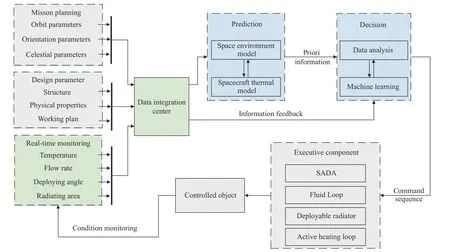
Fig.9.Adaptive thermal control flow chart.
5.SUMMARY
This article summarizes the cooling system of the PSP solar arrays, as well as the development and application of efficient heat dissipation technology on different spacecrafts, and proposes research prospects for the future development of thermal control technology for the SCOPE spacecraft.The following insights are obtained:
(1) With the advancement of space exploration missions, high heat flux cooling technology has taken on greater significance.Conventional cooling methods have difficulty meeting the thermal control requirements of solar close-up exploration missions, and development of technologies with higher heat dissipation capabilities is urgently needed.
(2) Compared with pumped two-phase fluid loop systems and heat pump technology, a pumped single-phase fluid loop ensures a balance between efficiency and reliability, making it an important means of high heat flux cooling for future spacecraft.The SCOPE vehicle may use pumped single-phase fluid loop technology for the cooling of solar arrays, and detailed design work needs to be carried out in the future.
(3) There are many parameters that can be controlled in a pumped single-phase loop, such as flow rate,flow path, temperature, and radiator area.How to coordinate the various parameters relevant to heat transfer performance is a key issue.Therefore, it is necessary to develop an on-orbit adaptive thermal control method for pumped fluid loop systems to allow real-time adjustment of the heat dissipation capacity of the SCOPE spacecraft.
ACKNOWLEDGEMENT
This work has been supported by National Key R&D Program of China No.2022YFF0503804.
AUTHOR CONTRIBUTIONS
Kangli Bao conceived the idea, provided investigation support, wrote original draft and edited the manuscript.Xiaofei Zhu and Jianchao Feng provided investigation support and wrote original draft.Liu Liu provided investigation support, reviewed and edited the manuscript.Xiaofeng Zhang reviewed the manucsript,played the project administration and supervision role.Zhiming Cai reviewed the manucsript and played the supervision role.Jun Lin reviewed the manucsript and supported the funding acquisition.Yonghe Zhang played the supervision role.All authors read and approved the final manuscript.
DECLARATION OF INTERESTS
Xiaofeng Zhang, Zhiming Cai and Yonghe Zhang are editorial board members for Astronomical Techniques and Instruments, Jun Lin is the executive editor-in-chief for Astronomical Techniques and Instruments and they were not involved in the editorial review or the decision to publish this article.The authors declare no competing interests.
- 天文研究与技术的其它文章
- Exploring the Mysteries of the Universe, and Innovation Leading the Future
——Astronomical Techniques and Instruments - Development and application of high-precision multifunction astronomical plate digitizers in China
- A predictive model for regional zenith tropospheric delay correction
- Design and analysis of an advanced thermal management system for the solar close observations and proximity experiments spacecraft
- Characteristics and close-range exploration methods of near-Earth asteroid 2016HO3
- End-to-end computational design for an EUV solar corona multispectral imager with stray light suppression

